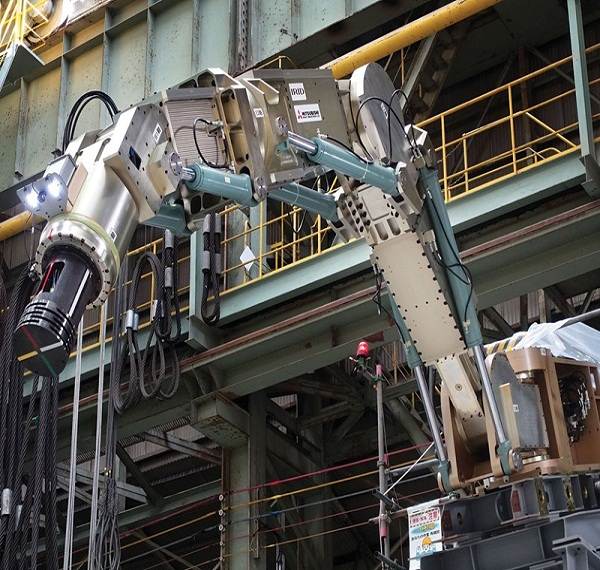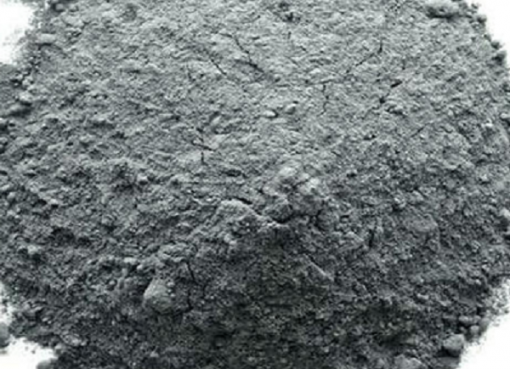Nuclear energy’s environmental image is as low as carbon’s, with its clean fuel potential being tarnished by legacy waste issues. Are we any closer to resolving this?
Even when the foreign-owned waste has headed back home, the UK will still play host to one of the largest hoards of plutonium in the world, standing at more than 110 tonnes. It amounts to a fifth of the world’s total and a third of the global civilian stockpile of 316 tonnes. Despite operating a smaller nuclear fleet than France’s, the UK has 1.5 times more plutonium.

It was never meant to end this way. The long-term dream was for fission-capable fuel to keep going round in a circle, only topped up with virgin uranium when necessary. The plutonium produced during fission could itself sustain further fission in the right conditions. However, fast-breeder reactors that would be needed to close the cycle remain largely experimental, even in countries such as Russia where their development continues. Driven by both safety concerns and worries about nuclear proliferation that might result from easier access to separated and refined plutonium-239, the West abandoned its fast-breeder programmes decades ago.
It is possible to reprocess spent fuel into so-called mixed-oxide fuel, but it is only good for one use in a conventional reactor. Other actinides build up and begin to poison the fission process. The only prospects for change lie in so-called Generation IV reactors, but these designs have yet to be tested and may continue to fall foul of proliferation concerns.
While operators around the world have mulled over the practicality of fuel reuse, containers of both processed and reprocessed fuel have lingered in storage tanks cooled by water despite, in some countries, being earmarked for deep burial for decades. In the late 1980s, the US Department of Energy (DoE) settled on Yucca Mountain in Nevada as the single destination for the country’s spent nuclear fuel, and scheduled it for opening a decade later. By 2005, the earliest possible opening date had slipped by 20 years. It remains unopened and will probably never open. In the interim, much of the fuel has lingered in water-filled cooling tanks while politicians consider more localised deep-storage sites.
Fukushima provided a wake-up call to the industry, not just about the problems of controlling reactors but their spent fuel. After the tsunami, engineers were concerned that without replenishment pumps, the water in the storage tanks for the spent fuel would evaporate. If the fuel then caught fire, it would likely release radioactive tritium and caesium into the atmosphere. In a stroke of luck, water leaked into the damaged ponds. Now the issue for operators of some older reactors is that the fuel canisters are just corroding into the water instead.
Experts such as Frank von Hippel, professor of public and international affairs at Princeton University, recommend storage pools should only be used until the fuel is cool enough to be transformed into glass, immersed in concrete or both, and transferred to dry storage, preferably in a deep geological disposal facility (GDF).
At a conference last November organised by the International Atomic Energy Agency (IAEA), Laurie Swami, president and CEO of Canada’s Nuclear Waste Management Organisation, claimed “there is scientific consensus on the effectiveness of deep geologic repositories” for highly radioactive waste.
The UK similarly settled 15 years ago on a plan to build its own GDF for high-level waste in tandem with the establishment of a single government-owned body responsible for organising where the waste goes, in the shape of the Nuclear Decommissioning Authority (NDA). The GDF took a small step forward at the end of 2021 when two candidate sites were announced, both close to the Cumbrian coast. The local communities have agreed in principle that the NDA can investigate where they are suitable for a set of tunnels that may extend under the Irish Sea. With the project at such an early stage, the country remains years away from opening a GDF. Finland, in contrast, has pressed ahead and expects its GDF to open in 2025, while Sweden is likely to have the second one in the world.
At the same time, there is an enormous volume of other irradiated material that cannot economically be put into deep storage. In a keynote speech at the IAEA’s conference, James McKinney, head of integrated waste management at the NDA, explained that a lot of radioactive waste is contaminated building material. The Low-Level Waste Repository at Drigg in Cumbria was designed for this kind of waste, but McKinney stressed that capacity is “precious” and in danger of running out if all the material is taken there. Over the past decade, the NDA and its subcontractors have been working to divert as much waste as possible from the Drigg site by reprocessing and repackaging it.
By bringing waste management under one umbrella instead of dividing it among power-station operators, the NDA has been able to change procurement strategies to favour the use of much more R&D for waste handling. “The destination of radioactive waste can be changed through interventions,” McKinney adds. “At this moment, we estimate some 95 per cent of potential low-level waste is being diverted away [from Drigg]. Twelve years ago, the opposite would be true.”
A recent example of this in action is the dismantling of pipes that were once installed at the Harwell research centre. More than 1,500 sections of metal pipe were delivered to oil-and-gas specialist Augean, which is using high-pressure water jets to remove radioactive scale so the metal can be recycled instead of needing long-term storage.
Getting less manageable waste away from the storage tanks presents another major challenge, particularly if it comes from the oldest reactors. For example in the UK, when spent Magnox fuel was taken out of the reactors, the magnesium cladding around it was stripped away and moved to Sellafield’s Magnox Swarf Storage Silo (MSSS). Though the swarf itself is just intermediate-level waste, Sellafield’s operator regards emptying the silo ready for transfer to long-term dry storage as one of the more hazardous projects on the site. Stored underwater to keep them cool, the packages of swarf gradually corrode and release hydrogen gas and contaminants, which can escape into the ground. Moving the waste for treatment can itself lead to more escapes.
To manoeuvre 11,000 cubic metres of waste out of the 22 chambers of the MSSS, it has taken more than two decades to design, build and install two out of three shielded enclosures and grabbing arms that can lift out pieces of the swarf and prepare it to be immobilised in concrete or glass.
The time it has taken to even begin to clean up the MSSS illustrates the core issue that faces decommissioning and clean-up programmes: the sheer difficulty of trying to handle even moderately radioactive materials in circumstances where access was never considered when these structures were first built and filled. Everything in this kind of decommissioning calls for ungainly long-distance manipulators because there is no other way to protect the clean-up crews.
As engineers struggled to deal with the Fukushima disaster in March 2011, many people in Japan thought the same thing, and expressed surprise that a country that had invested so much in robotics research had none that it could send into the reactors to even perform a survey.
Japan was not alone with this issue: no country had a dedicated nuclear-accident response robot. Work on robots began decades ago but continued only in fits and starts for the most part. After a serious incident in 1999 at an experimental reactor at Tokaimura, the Japanese Ministry of Economy, Trade and Industry set aside $36m to develop remote-controlled machines. But the projects ended within a few years.
To help deal with the immediate problems at Fukushima, the US research agency DARPA was quick to repurpose the military and disaster robots to which it had access, originally planning to send them on Navy ships across the Pacific. But it quickly emerged that this would be too slow.
At a conference organised by the International Federation of Robotics Research on the 10th anniversary of the accident, Toyota Research chief scientist Gill Pratt said the first robots “got there in the overhead luggage of commercial flights”. For all of them it was a baptism of fire.
Direct radiation damage was not the only problem for the Fukushima robots. Reactors are protected by thick concrete walls. Wireless signals fade in and out and fibre-optic cabling becomes an impediment in the cluttered space of a damaged building. To be close enough to the machines, operators had to wear bulky protective clothing that made teleoperation much harder than it would be in other environments. Several robots went into the building only to fail and get stuck, turning into obstacles for other machines.
The risk of these kinds of failure played into the nuclear industry’s long-term resistance to using robots for repair and decommissioning. Plant operators continued to favour mechanical manipulators operated by humans, separated by both protective clothing and thick lead-heavy glass.
Since Fukushima, attitudes to robots in the nuclear industry have changed, but remote control remains the main strategy. Pratt says humans remain generally better at control and are far better at dealing with the unstructured environments within many older and sometimes damaged installations.
The long-term aim of those working on these systems is to provide robots with greater degrees of autonomy over time. For example, surveillance drones will be flown with operator supervision but the machines are acquiring more intelligence to let them avoid obstacles so they need only respond to simpler, high-level commands. This can overcome one of the problems created by intermittent communications. One instance of this approach was shown when UK-based Createc Robotics recently deployed a drone at Chernobyl and Fukushima, choosing in the latter case to survey the partly collapsed turbine hall for a test of its semi-autonomous mapping techniques.
To get more robots into play in the UK, the NDA has focused its procurement more heavily on universities and smaller specialist companies, some of which are adapting technologies from the oil and gas industry.
The NDA expects it will take many years to develop effective robot decommissioning and handling technologies. It has put together a broad roadmap that currently extends to 2040. Radiation susceptibility remains an issue. Visual sensors are highly susceptible to damage by ionising radiation. However, a mixture of smarter control systems and redundancy should make it possible to at least move robots to a safe point for repair should they start to show signs of failure.
Another design strategy being pursued both in the UK and Japan is to build robots as though they are a moving, smart Swiss-army knife: armed with a variety of detachable limbs and subsystems so they can adapt to conditions and possibly even perform some on-the-fly repairs to themselves.
Slowly, the technology is appearing that can handle and at least put the waste out of harm’s way for a long time, though you might wonder why the process has taken decades to get to this stage of development. *
Deep burial seems to be the easiest way to deal with long-lived waste, assuming no-one tries to dig it up without heavy protection and good intentions hundreds or thousands of years into the future. But the question of how safe it is if the repository breaches accidentally is extremely hard to answer.
Plutonium is unlikely to be the biggest problem. Although it oxidises readily to dissolve in water, the short-lived fission products such as strontium-90 and caesium-137 could be more troublesome if they escape the confines of a storage site, according to analyses such as one performed by SKB as part of Sweden’s programme to build a deep burial site there.

The half-lives of these isotopes are far shorter than those of plutonium, so the risk from them will subside after a couple of hundred years rather than the thousands for plutonium. But what if they could be shortened to days or even seconds? Any radiation could then be contained or used before the waste is repackaged.
This is the promise of laser transmutation, which uses high-energy beams to displace neutrons in donor atoms that then, with luck, smash into those unstable isotopes to produce even more unstable atoms that quickly decay. In one experiment performed by Rutherford-Appleton Laboratory, a laser transmuted atoms in a sample of iodine-129, with a half-life measured in millions of years, to iodine-128. A similar experiment at Cambridge converted strontium-90 to the medical labelling chemical strontium-89.
The bad news is that the energy required to perform transmutation at scale is enormous and not all isotopes are cooperative: their neutron-capture volumes are so small the process becomes even less efficient.
Nobel laureate Gérard Mourou believes careful control over high-energy pulsed lasers will bring the energy cost of transmutation down significantly. He is working with several groups to build industrial-scale systems that could begin to clean up at least some of the high-activity waste.
Even if lasers can be made more efficient, there are further problems. For one, the waste needs to be separated as otherwise the stray neutrons will transmute other elements in the sample, generating unwanted actinides. This will not only increase the cost of reprocessing, it will increase the risk of proliferation, as it will lead to plutonium that is far easier to handle and move around, the one outcome that deep burial is meant to avoid.
The digital twin is becoming an important element of nuclear waste disposal both for finding where to put it and to move it around. The UK’s Nuclear Decommissioning Authority (NDA) has adopted the concept to help build a more comprehensive picture of what is stored where and why.
Corhyn Parr, CEO designate for waste at the NDA, explained at a conference organised by the International Atomic Energy Agency in November that the agency has “more detailed lifetime planning now. It helps us to have real-time live data and have it open, to enable us to be really clear with the public how we are delivering”.
One way in which digital twins can be used is to show that the condition of the waste is not changing unexpectedly. For example, the NDA is looking at the use of sensors with a 30-year lifetime that could be powered partially by energy produced by the waste itself to indicate corrosion and other problems in dry storage. Those readings can be compared in real time with simulations and, in principle, make it easier to deal with one big problem with long-term waste management: having to guess at whether any of it is escaping or becoming dangerously hot.
Similarly, digital-twin techniques are being tried in a new generation of robotic controllers to make it easier for human operators to visualise what is happening to the robot and the environment around it. One example of this approach will be the LongOps project, the result of a £12m deal between the UK and Japan to develop better long-range manipulators that can be used for decommissioning. For longer-range remote control the digital-twin approach may make it possible to implement more intuitive control over robots using virtual or augmented reality.
Source: E&T










